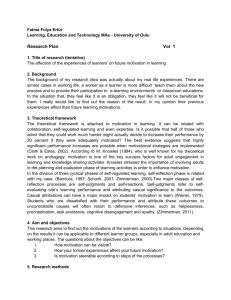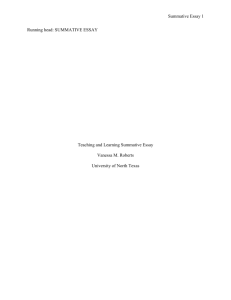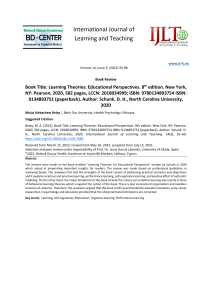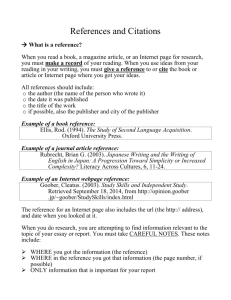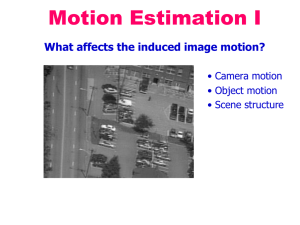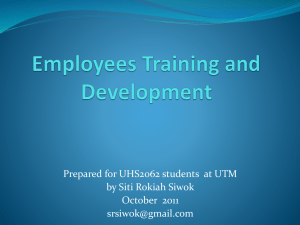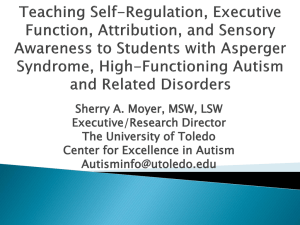Brenda Medock Unit Plan Reflection Curriculum 503 – Learning and
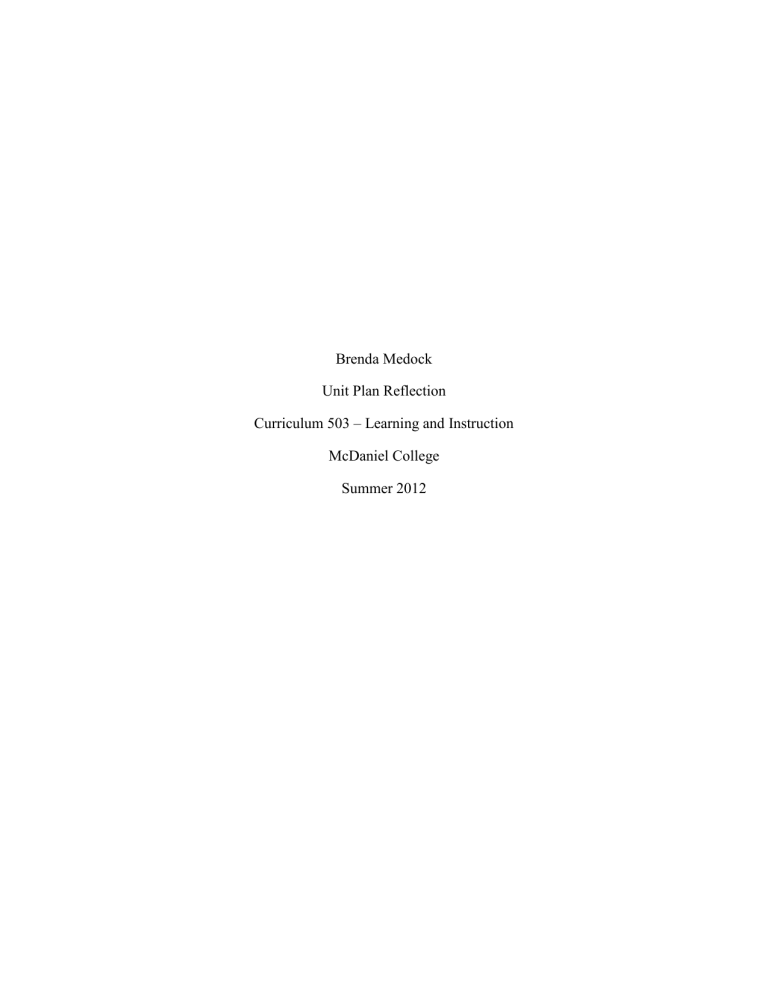
Brenda Medock
Unit Plan Reflection
Curriculum 503 – Learning and Instruction
McDaniel College
Summer 2012
My original unit plan consisted of three days in fourth grade curriculum based on estimation, solving, and solving in a different way two digit multipliers. This is currently part of
2 the fourth grade curriculum in Carroll County Public Schools.
In my original unit plan I use the gradual release model, which is sometimes called the “I do, we do, they do” method of teaching. Schunk states in his theories of imitation that the student observes the action, imitates the action, imitates and is reinforced through shaping, and the imitation or desired learning behavior becomes a secondary drive (p. 124). Concrete items such as number lines and digi-blocks are used for hands-on learning experiences. This type of instruction is purported by Piaget’s concrete operational stage which is students from the ages 7 to 11 (p. 237).
In addition my original unit plan also included some components of the spiral curriculum.
Schunk states, “Bruner recommended that content be revisited: Concepts initially should be taught in a simple fashion so children can understand them and represented in a more complex fashion with development” (p. 459). The spiral curriculum is in use when estimation is revisited in days two and three before solving the multiplication problems.
Lev Vygotsky’s sociocultural theory is woven into my original unit plan as well.
Vygotsky believed that social interactions are critical and knowledge is co-constructed between two or more people. Other key points in his theory are: human development occurs through cultural exchange of language, language is the most critical tool, and the ZPD (zone of proximal development) promotes cognitive development (Schunk 2012, p, 243).
The use of small dry erase boards, dry erase markers, digi-blocks, and open-array trays is motivating. Schunk states that “Motivation is the process of instigating and sustaining goaldirected behavior” (p. 346).
As I have read through the textbook, Learning Theories: An Educational Perspective by
Dale H. Schunk, I have thought of other ways to incorporate even more learning theories into
3 this three day unit plan. In addition to the students using the dry-erase number line templates, they could also use hypermedia on the classroom desktops or in the computer lab. Schunk states that “hypermedia refers to linked or interactive media and learning occurs when students interact with information presented in more than one mode” (p. 326).
In addition, worked examples could be added into the lesson plans on the two different ways to multiply. “Worked examples present step-by-step problem solutions and often include accompanying diagrams” (p. 332). Schunk continues to say that worked examples reflect
Anderson’s ACT-R theory and are especially appropriate for more complex types of learning (p.
332).
To connect the computation to the concept I could have the students solve words problems that involve estimation and multiplication. Rittle-Johnson and Alibali (1999) as stated in Schunk indicated that conceptual understanding had a greater impact on procedural knowledge than does computation on concept (p. 338). In addition to the word problems I would have the students use mathematical problem solving techniques. Mayer (1985, 1999) states in Schunk that “Problem solving requires that students first accurately represent the problem to include the given information and the goal and then select and apply a problem-solving strategy” (p. 340). I could use a four-square poster or template where the students could work with a partner to support the social cognitive theory where they would sketch the problem, write the problem in their own words, solve the problem, and solve the problem in a different way.
“Parental involvement is a critical factor influencing children’s self-regulation, which is central to the development of cognitive functioning” states Schunk (p. 469). I use many ways to
do multiplication in my mathematics classroom. Many times, I will have parents write notes or
4 send e-mails about the “new” way of doing multiplication or division. In my opinion, involving parents from the beginning of the year and keeping them in the loop when it comes to different ways to do math is important. I could send home examples and explanations of how to do these new ways of math to the parents at the beginning of the unit to involve them initially and get their support at home. While this is not a change in the “specific” lesson plan, it is a change that could be made to improve understanding with the parents and, in turn, with the students.
References
Schunk, D. H. (2012). Learning theories: An educational perspective. Boston, MA:
Pearson.
5

